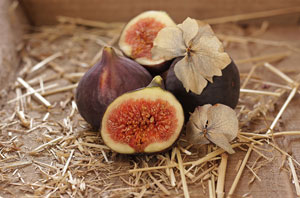Cervantine Days in Esquivias

You have a cordial invitation in Toledo to go back in time to the 16th century, where you can witness the magnificent staging of the betrothal of the Spanish playwright Don Miguel de Cervantes y Saavedra. This is the Jornadas Cervantinas de Esquivias, a wonderful tradition in this town in Toledo, with theatre, stage and poetry.
What is the Jornadas Cervantinas de Esquivias about?
The Jornadas Cervantinas de Esquivias is a popular festival with an ancient historical and Cervantine tradition that has been held in Esquivias (Toledo, Spain) since 1979, around 12 December, on the initiative of the Sociedad Cervantina de Esquivias.
It consists of recalling episodes from the life of the Spanish novelist, poet and playwright Miguel de Cervantes Saavedra (1547-1616). Various theatrical and poetic performances are staged about his betrothal in the town of Esquivias in 1584.
This popular festival has been declared by the Directorate General of Tourism and Crafts of Castilla-La Mancha as a Festival of Regional Tourist Interest since 2015.
How are the Jornadas Cervantinas held in Esquivias?
Various activities are carried out during the celebration of these days, with the active participation of Esquivias Town Council:
- Theatrical performances.
- Poetic acts.
- Wine tastings.
- Painting competitions.
- Gastronomic tastings.
- Cervantes market.
- Conferences.
- Closing dinner.
Origins of the celebration of the Cervantes Days in Esquivias
The origin of the Jornadas Cervantinas de Esquivias dates back to 1979, due to the urgent need to disseminate the influence of the town of Esquivias in the life and work of Miguel de Cervantes.
It was in this significant place that he spent his personal and creative maturity, particularly his marriage to the Esquivian Catalina de Salazar y Palacios, which took place in Esquivias on 12 December 1584.
What else can you see or do in the town if you go to Esquivias?
Discover some places with a long historical and cultural tradition in Esquivias:
- Miguel de Cervantes House-Museum: it is a large house that maintains all the characteristics of 16th-century buildings. In 1971 it was declared a Historic-Artistic Monument.
- Convent of Capuchinos: it was built during the period 1719-1725, being formerly inhabited by monks of the Capuchin order.
- San Roque Chapel: a building consecrated on November 26th 1602, it has a Baroque altar in the Churrigueresque style, characterised by Solomonic columns.
- Parish Church of Nuestra Señora de La Asunción: neoclassical religious building built between 1785 and 1794 on the ruins of a previous church, conserving the chancel, the tower and a baptismal font dating from 1686.
Gastronomy in Esquivias
We invite you to sample the various culinary options offered by the Cervantine gastronomy of Toledo:
- Arroz a la Toledana: this is a mixed dish of rice casserole prepared with meat, fish, squid, conger eel, chicken and mushrooms.
- Carcamusas: a stew prepared with veal, to which ham and chorizo sausage are added.
- Cocido de Tres Vuelcos: a stew made with meat, slaughter products, vegetables and chickpeas.
- Olla Podrida: it is prepared in a clay pot, adding red beans, bacon, chorizo, chorizo, ear, ribs and pork snout.
- Paté de Perdiz: this is a typical dish from the Montes de Toledo area, made with red partridge meat.
- Stewed partridge: this is a typical stew seasoned with aromatic herbs, spices and wine.
- Sopa de Ajo (garlic soup): it is prepared with garlic, eggs, bread, olive oil and paprika. Chopped ham can be added.
- Toledanas: these are sweet pastries filled with angel hair and covered with chopped almonds.
Share images, videos and interesting information about the Jornadas Cervantinas de Esquivias on social networks. Use the hashtags #Cervantinas #Esquivias






